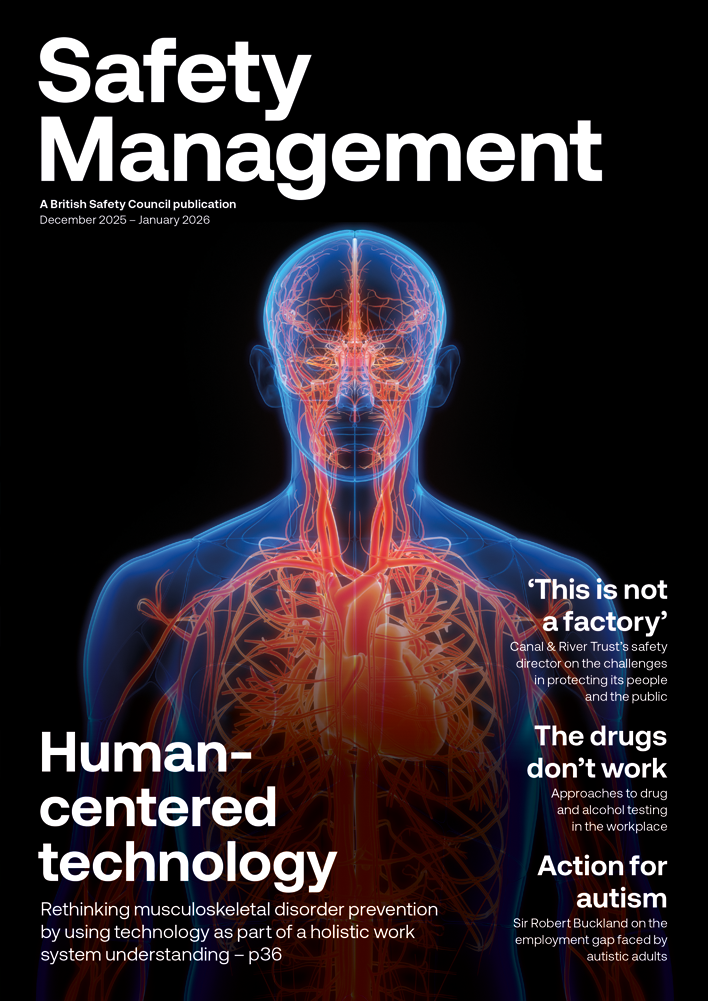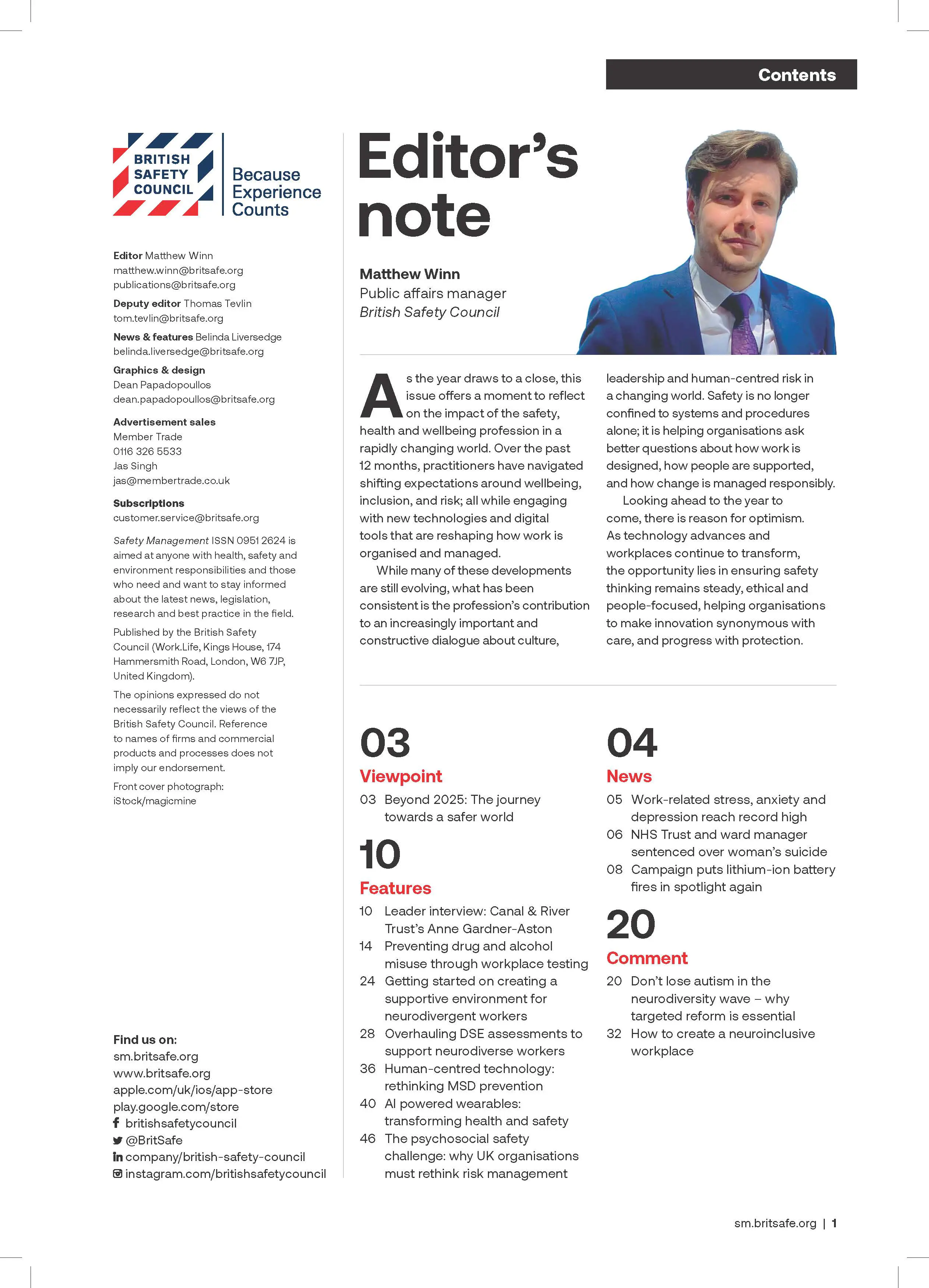The world is getting hotter, and heatwaves are becoming more frequent and more severe. Recent projections say 2024 is set to be the warmest year yet. As the summer of 2022 demonstrated, despite its reputation for cold and rain, the UK is not immune from these bouts of extremely hot weather.
Opinion
How to keep workers safe in an increasingly hot United Kingdom
It’s unfortunate that, perhaps due to our cultural fixation with sunny holidays, we can’t help but view hot weather as a blessing and something to be thankful for. Extreme heatwaves are all too often covered in the media by pictures of people on the beach or enjoying ice creams. But the lived experiences of the heat tell a different story, with significant damage to health and productivity. As the science shows us, extreme heat has important implications for worker safety.
 Photograph: iStock/coffeekai
Photograph: iStock/coffeekai
The human body responds in a few ways to extreme heat. Blood flow is directed to the skin, sweating increases and the circulatory, nervous, respiratory and renal systems adjust to try to maintain optimal body temperature and fluid levels. If these adaptations are overwhelmed, overheating sets in, with serious consequences for our health.
This can include cardiopulmonary problems and increased risk of cardiovascular mortality, especially among high-risk groups, of which outdoor workers are one. Extreme temperatures have also been shown to impair cognitive performance and are associated with increased risk of mental illness. During the 2022 UK heatwaves, 2,985 excess deaths were recorded.
Safety risks to workers
Given the clear safety risk that heat presents to workers, particularly those working outdoors, steps must be taken for worker safety during hot weather.
Chief among them is staying out of the midday sun – hot countries such as Spain have long adapted to high temperatures by taking a two- to three-hour break in the middle of day, and working when it is cooler. Practices like this, while they may feel disruptive or unusual at first, are essential to reducing heat-related risks. When working in the sun is unavoidable, outdoor workers must have access to appropriate clothing, sunscreen and water, and be encouraged to take regular breaks in the shade, or ideally in a dedicated cooling area.
For indoor workers, the risks presented by extreme heat will depend largely on their access to cooler spaces and cooling systems. Ventilation, air circulation and shading are key. Research shows how measures such as awnings and window shutters can significantly reduce internal temperatures, while the use of ceiling fans can reduce the burden on air conditioning systems. Trees and vegetation are also proven to significantly reduce internal temperatures when allowed to grow around buildings. Very few schools and hospitals in the UK have ceiling fans – this represents an obvious and relatively affordable way to adapt to the coming heat.
As temperatures rise, a go-to quick solution often becomes cooling buildings by air conditioning. Indeed, air conditioning already consumes 20 per cent of all electricity on the planet and demand for air conditioners is expected to triple by 2050. This is extremely concerning, especially as our electricity system continues to rely on fossil fuels.
 Dr Radhika Khosla is associate professor at University of Oxford's Smith School of Enterprise and the Environment
Dr Radhika Khosla is associate professor at University of Oxford's Smith School of Enterprise and the Environment
Commonly used air conditioners emit climate damaging gases and drain large amounts of electricity. This leads to increased greenhouse gas emissions, exacerbating climate change, and resulting in more extreme heat events (which then lead to an increased demand for air conditioning). This leads to a vicious cycle of high energy consumption to make people feel cooler inside, while making the world outside ever hotter.
My colleagues and I at the Oxford Martin Future of Cooling Programme have written at length about approaches to sustainable cooling and finding ways to reduce the impact of air conditioners on our planet. The key steps include improved shading, ventilation and circulation within and outside our buildings, while making air conditioners themselves more efficient and sustainable.
Dangerously hot
Temperatures around the world are set to become dangerously hot, and it is important that we are prepared to act and build resilience to rising extreme heat. ‘Heat action plans’ provide one such strategy, and their effectiveness turns on the ability to co-ordinate and implement action across different parts of government and civil society.
Heat action plans set out various steps in the event of a heatwave, including early warnings and mitigation of the impacts during and the after the heatwave itself, as well as assigning responsibilities to various government departments. This has proved effective, and it’s a practice that safety managers in workplaces can follow. Having a good plan in place is a great way to reduce the risk that extreme heat represents. In the UK, the Heat-Health Alert Service and Adverse Weather and Health Plan help provide some of these tools.
It is time to take the threat of extreme heat seriously. Our recent study showed how the UK was “dangerously under prepared” for the rising temperatures we face if the world misses its climate targets. Until the Government creates a National Heat Resilience and Sustainable Cooling Strategy, which it has declined to do despite expert advice, it’s up to safety managers to take the lead in protecting their workers in an increasingly hot UK.
Dr Radhika Khosla is associate professor at the Smith School of Enterprise and the Environment, School of Geography and the Environment, and research director of the Oxford India Centre for Sustainable Development, Somerville College, at the University of Oxford. She is the programme leader in Zero Carbon Energy Use at Oxford’s ZERO Institute:
OPINION

How to create a neuroinclusive workplace
By John Robinson, Schofield Sweeney on 09 December 2025
The modern workplace is a diverse environment. Most workforces will be made up of individuals representing the majority of the groups protected under the Equality Act 2010.

Don’t lose autism in the neurodiversity wave – why targeted reform is essential
By Rt Hon Sir Robert Buckland KBE KC on 03 December 2025
Autistic adults have waited too long for meaningful reform. They have shared their experiences and expertise. Now they deserve action, accountability, and transformation.

Inclusion saves lives: embedding equality, diversity and inclusion (EDI) into global occupational safety and health
By Umer Changaiz, CMIOSH on 03 December 2025



